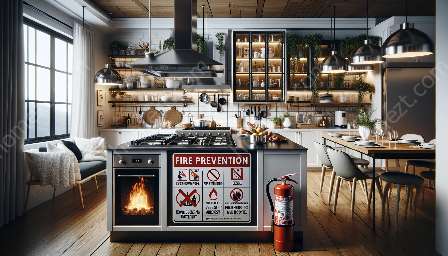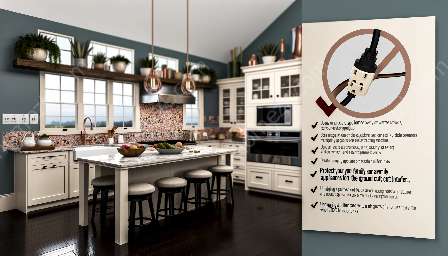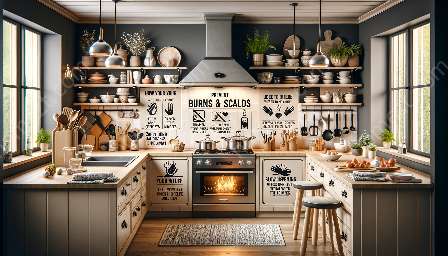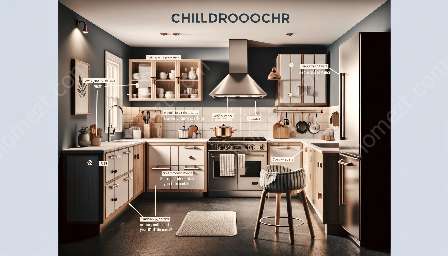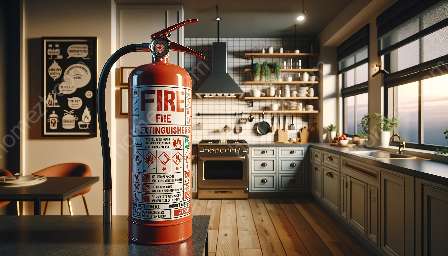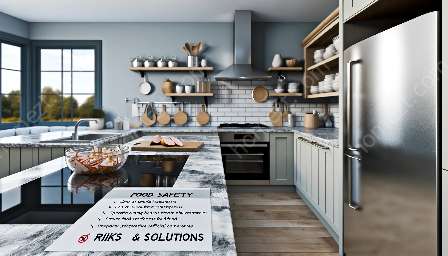Fire prevention is a critical aspect of kitchen safety and can greatly enhance the overall experience in the kitchen and dining areas. With the potential risks associated with cooking, it's important to be well-informed about fire prevention techniques and best practices in order to maintain a secure and enjoyable environment. In this comprehensive guide, we'll explore the importance of fire prevention, its compatibility with kitchen safety, and how to effectively integrate these practices into your daily routine.
Kitchen Safety and Fire Prevention
Kitchen safety and fire prevention go hand in hand, as the kitchen is one of the most common areas where fire incidents can occur. By understanding the underlying causes of kitchen fires and implementing preventive measures, individuals can significantly reduce the risk of fire-related accidents. When it comes to kitchen safety, the following aspects are often associated with fire prevention:
- Proper Use of Cooking Appliances: Always ensure that cooking appliances are used appropriately and maintained in good working condition. Regularly check for any malfunctioning parts or electrical issues to prevent potential fire hazards.
- Safe Handling of Flammable Materials: Keep flammable materials, such as cooking oils, away from open flames or high heat sources. Store them in cool, dry areas and use them with caution to prevent accidental fires.
- Clearing Clutter and Waste Management: Regularly clean and declutter the kitchen area to minimize the risk of accidental fires caused by flammable materials and waste. Proper waste management can significantly reduce the likelihood of a fire outbreak.
- Fire Safety Equipment: Ensure that the kitchen is equipped with essential fire safety tools, such as fire extinguishers and smoke detectors. Regularly check and maintain these devices for optimal functionality.
Enhancing Kitchen Safety for a Better Dining Experience
By prioritizing fire prevention and kitchen safety, individuals can create a safer and more pleasant environment for cooking and dining. Here are some practical tips to enhance kitchen safety and prevent fire incidents:
- Invest in Quality Cooking Equipment: Choose cooking appliances that adhere to safety standards and are equipped with automatic shut-off features to prevent overheating and potential fire outbreaks.
- Practice Safe Cooking Techniques: Follow proper cooking techniques and avoid leaving cooking appliances unattended. Always monitor the cooking process and be prepared to take immediate action in case of emergency.
- Maintain a Clean and Organized Kitchen: Regularly clean and organize the kitchen area to eliminate potential fire hazards. Proper storage and organization can significantly reduce the risk of accidents.
- Stay Informed About Fire Prevention Measures: Educate yourself and your family members about fire prevention strategies and emergency protocols. Having a clear plan of action in case of a fire can help minimize the impact of an unexpected incident.
Conclusion
In conclusion, fire prevention plays a vital role in ensuring kitchen safety and creating a secure environment for cooking and dining. By integrating these practices into everyday routines, individuals can minimize the risk of fire-related accidents and enhance overall safety. Taking proactive measures, staying informed, and prioritizing kitchen safety are essential for fostering a positive dining experience while minimizing potential risks. Implementing fire prevention techniques not only safeguards the kitchen and dining areas but also promotes a sense of confidence and security in the culinary environment.

